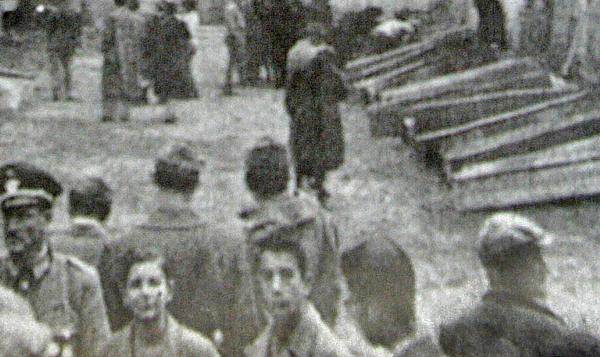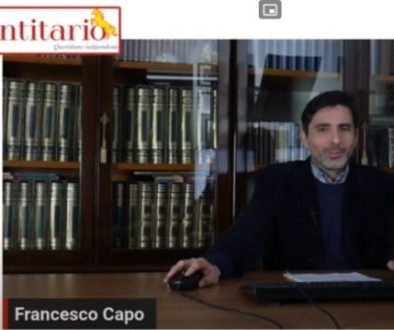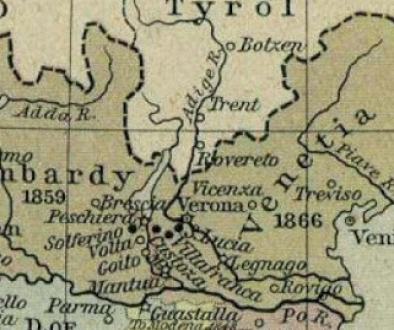10 February – day of remembrance of the Giuliano and Dalmato genocide
These pages are extracted from my book “The Republic unborn” of the 2007 . Nessun editore si è dimostrato disponibile alla pubblicazione a costi ragionevoli.
THE 27 October 1943 Major Linn M. Farish (American) delivery to the Strategic Operations Service (O.S.S.) in Bari the report of his mission on Tito's political and military objectives, dandogli ampio credito e affermando la necessità di prestargli aiuto. Secondo lui gli anglo-americani avano già fatto un errore il mese prima quando non avevano sostenuto i partigiani durante la loro occupazione di Spalato. From that moment, many islands and large stretches of the Dalmatian coast, già controllate dai partigiani titini ebbero rifornimenti via area e via mare. Farish aveva chiesto “limited air support along the Dalmatian coast in order to protect the supply lines” , but it was believed that Zara, to over 200 kilometers as the crow flies, was a threat, e così già a partire da novembre gli anglo-americani cominciano a bombardarla insieme all’Istria. Instead Zara was not even connected to the railway, and it had only an impracticable road to cross the Alps that separate it from the rest of Yugoslavia. Infatti a Zara e nel circondario non vi erano più di 1200 German soldiers in the moment of maximum occupation. Il fatto è che Tito voleva far bombardare Zara sebbene non ve ne fosse necessità militare1 .
At the end of the war the allied bombings will have been 54 and cause of numerous civilian victims2.
between 29 and the 30 November 1943 – 142 popular delegates from various parts of Yugoslavia to Jaice, proclaimed the establishment of the “Federative People's Republic of Yugoslavia”. Titus is placed at the head of the government with the rank of “Marshal of Yugoslavia”. A questa nuova repubblica vengono annesse unilateralmente l’Istria, River, Zadar and the Slovenian and Croatian coast. They are then supported by the allies who acted on titled information.
Anche in virtù della suddivisione dei Balcani operata a Yalta i titini poterono avanzare da Sud, e fino all’arrivo a Trieste nel maggio 1945, the Titine army, considered regular, attuò una forma di pulizia etnica in tutta la Jugoslavia ma specialmente in Istra e Dalmatia, in most cases to the detriment of Venetians who as Italian citizens were identified as fascists. Si trattò dunque di una pulizia etnica che si giustificò anche con motivazioni politiche ideologiche (communism) but that also became an occasion for some personal revenge, così come numerosi furono coloro che colsero l’occasione per salire sul carro del nuovo regime anche come spie e delatori.
Questa pulizia si realizzò con torture, shootings, infoibamenti, e di molte foibe se ne è persa persino la traccia e recuperate pochissimi resti. In fact, the sinkholes were sometimes closed with a simple explosion that closed the access. Certo è che la pratica durò tanto a lungo da convincere 350.000 people to abandon the land of ancestors, Homeland, abandoning all good and all kinship.
Ethnic-political cleansing through the sinkhole was particularly serious in Trieste, Gorizia and Istria in particular in the 45 days following the 1 maggio ’45 quando Tito entrò a Trieste con il suo esercito.
The communist partisans of Garibaldini had been diverted to Ljubljana and after Titian orders they returned to Istria only after twenty days, ormai a “pulizia” fatta. Gli ordini di Tito e del suo ministro degli esteri Kardelj erano di “Punire con severità tutti i fomentatori dello sciovinismo e dell’odio nazionale”, “Epurare subito”3. Titus and the Slavic Communists,but also the Italian ones of the Garibaldi Brigade up to Togliatti (justice minister) they thought of Venetia (then legally called Venezia-Giulia ) come una legittima proprietà di ascendenza, this time Slavic: the Venetians were Slovenians, not Italian. The exact symmetry of what the Fascists did in Slovenia and in Venetia. With the same curious psychological dynamic that we saw for the fascists, la carneficina non risparmiò nemmeno gli antifascisti come quelli della Brigata Osoppo, which however were of clear Italian faith, and even some members of the partisan CLN were uninhibited as non-Slavs. Così come i fascisti avevano fatto in Slovenia infoibando veneti non italiani, the native was hunted down, questa volta “italiano”, and there were summary executions, deportations, infoibamenti. Ma non è corretto vedere la cosa come una semplice ritorsione, perché sono pochi gli esseri umani che avendo perso un parente in un omicidio politico trovano giustizia nel vedere ucciso un poveretto qualunque sebbene di altra cultura. It is an ethnic political massacre.
Of course, the Italian military and civilians were not spared, but for the same logics of the fascists, this time Slovenian and Croatian non-communist civilians were also victims. Many were killed with hammers in order not to make noise and not to trigger the reaction of the population. The available figures tell us that only in Trieste were they deported around 8000 people alone 45 days. La sola Foiba di Basovizza è stimata contenere oltre 2.000 people, calculated on the basis of 300 cubic meters of bodies and bones piled inside. Eppure tutto ciò si sarebbe potuto evitare almeno in parte se il 2 and the 3 May, how much the allies arrived in Trieste, they had stayed there instead of returning to Monfalcone.
only the 9 June 1945 Titus and General Alexander defined 2 occupation areas. Solo allora agli Alleati toccò Trieste, half Gorizia and half Istria4 e si rinviò la definizione della regione tramite un referendum fatto a guerra finita per l’eventuale Autogoverno. Tito si ritirò nella zona B a sud, e in vista del voto la persecuzione dei non slavi durò almeno fino al ’47.
The destruction of Zadar and the ethnic cleansing of the city take special light. Based on the Austro-Hungarian census of 1910 Zara was populated for the 70% of the population from Italians, and the rest 30% they were Germans, Serbs and Croats.
Note 1- Gen. Carlo Ravnich was, in 1943, major commander of the Alpini battalion “Aosta!”. On 8 September I pass with the Titini partisans and in “Illustrated story” n. 274 of September 1980 says that then, after the first collaboration agreements, il comando partigiano jugoslavo chiese che facessero un fonogramma a nome loro per chiedere in Italia di bombardare Zara perché, they said, “considerable German forces were concentrating on it“. Ravnich ricorda che il fonogramma partì seppure cercarono di modificarlo in modo da renderlo inattendibile.
Note 2 – on communist crimes in Dalmatia see also http://www.dalmatia.it/dalmazia/calvario/alleati1.htm
Note 3 –Gianni Oliva, foibe. “Le stragi negate della Venezia Giulia e dell’Istria”, Mondadori, Milano 2002Note 4- confirmed by the London Memorandum of 1954
On the communist and Togliatti project of annexation of Friuli and Veneto to Yugoslavia see http://www.palmerini.net/blog/?p=88
Per saperne di più
http://it.wikipedia.org/wiki/Giorno_del_Ricordo







luciano
25 January 2009 @ 03:27
The exiles wait later 60 years:
1) today, everyone talks about Norma Cossetto when I remember I was one of the first to hear about it here in Sardinia and to know all its history, its true story. But there are many other things that you don't know, or that you don't want them to know each other: the shame that still today the city of Padua hosts in its University , where Norma Cossetto studied and where a commemorative plaque is reported where she reports that Norma Cossetto is a victim of Nazism, when we all know very well that it's a dirty and filthy lie.
2) Return of the tombs
3) Return of houses
4) Compensation and quo and final
5) Compliance with the law for birthplaces on documents
Our organizations have done nothing but take the money from the government to keep quiet, to sleep and cheat the exiles. Shame
The business is huge behind the exiles' shoulders
The only positive thing, even if it's an end in itself, it is the recognition of the DAY OF REMEMBRANCE, but not even this was promoted by the Organizations but by the Honorable Menia with cross votes. Shame!
alessandro
11 February 2008 @ 09:38
good initiative. I underline some inaccuracies: the population, although speaking a dialect deriving from the Venetian (inheritance of the serenissima), cannot be considered Venetian. Triestini = Giuliani, Inhabitants of Istria = Istrians, Inhabitants of Dalmatia = Dalmatians.
The position of the allies was somewhat more complex and the intimidation and persecution of the Italians lasted well beyond 47.
For more detailed and precise information, refer to the volume “Seminar Proceedings, Exodus” drawn up by the Ass. of the Istrian communities of Trieste.
10 February: I don't forget!
mstatus
9 February 2008 @ 09:38
Congratulations on the article.
a warm greeting!